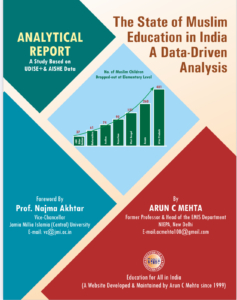Rajasthan University Case: Faculty Recruitment Delays & Contractual Appointments 2025
Introduction
India’s higher education system faces a critical challenge in addressing chronic faculty shortages, exemplified by the University of Rajasthan’s (RU) recent proposal to assign teaching duties to research scholars to fill over 60% of vacant teaching posts. This measure, reported on August 16, 2025, by The Economic Times Education, reflects broader systemic issues across state universities, where reliance on contractual faculty and temporary solutions undermines quality and growth. The University Grants Commission (UGC), as the apex regulatory body, plays a pivotal role in setting standards, disbursing funds, and ensuring quality in higher education. Yet, its effectiveness in addressing faculty shortages has been questioned, with critics pointing to bureaucratic inertia, political influences, and governance disputes, such as government-Governor tussles in opposition-ruled states.
This article critically examines the UGC’s role, apparent inaction, and the implications for achieving the National Education Policy (NEP) 2020’s target of a 50% Gross Enrolment Ratio (GER) by 2035. It also draws on, insights from Mehta’s articles, “Gross Enrollment Ratio in Indian Higher Education: NEP 2020 Targets vs Current Reality” (2025) and “Five Years of NEP 2020: Achievements, Missed Opportunities, and the Path to Universal Education in India” (2025), inform the analysis of systemic barriers to higher education expansion.
Faculty Shortages: A Systemic Crisis
Faculty shortages are a national issue, with over 35% of teaching posts vacant in state universities, according to NITI Aayog estimates. At RU, over 60% of posts (approximately 400-500 out of 800) remain unfilled, affecting departments like Chemistry, History, and Economics. The reliance on contractual faculty, a practice dating back to the early 2010s, mirrors Prof. Arun C. Mehta’s experience at RU from 1978 to 1980. During this period, Mehta faced six-month terminations, no summer salaries, and minimal benefits, highlighting the precarious nature of contractual employment. This pattern persists, with contractual faculty in Rajasthan earning ₹25,000-₹45,000 monthly, receiving limited medical coverage, no pension, and 12-15 casual leaves annually. The average tenure remains 3-5 years, with high turnover due to job insecurity.
The Rajasthan University Case: Engagement of Research Scholars in Teaching
Rajasthan University, a leading state university, faces chronic faculty shortages with over 60% teaching posts vacant as of 2025. The institution, like many state universities in India, relies heavily on contractual and guest faculty due to recruitment delays, administrative bottlenecks, and financial constraints. Recently, the academic council proposed engaging research scholars to teach regular classes as a response to these vacancies (Economic Times Education). In the past, Rajasthan University had eminent economists on its Faculty, such as Raj Krishna (famous for coining the term “Hindu rate of growth“), Y K Alagh, M. V. Mathur, and others.
Timeline of Recruitment Delays in RU
As is evident from the table below, there has always been an inordinate delay in the recruitment of faculty in the Rajasthan University; for about 27 years from 1985 to 2012, no recruitment took place in RU during which a large number of faculty members superannuated which is in addition to already lying teaching positions across different departments of the University.
| Year/Period | Event/Recruitment Status | Remarks/Impact |
|---|---|---|
| 1985–2012 | 27-year Recruitment Gap | No major regular faculty appointments; posts remained vacant; reliance on contractual/guest faculty [TOI 2012]. |
| 2012–2013 | Major Recruitment Drive for 294 Posts | First in decades, but backlog persisted; many posts still vacant [TOI 2012]. |
| 2011 | Missed Deadlines | Selection process stalled, deadlines missed [TOI Nov 2011]. |
| 2014–2018 | Five-year Delay | Recruitment delayed due to administrative/legal/political reasons [TOI 2018]. |
| 2018 | Controversies | Allegations of irregularities, delayed appointments [TOI 2018]. |
| 2019–2024 | Sporadic Drives, Persistent Vacancies | Notices issued but many posts still vacant; dominance of contractual faculty. |
| 2025 | 60% Vacancies | Proposed use of research scholars to teach; ongoing crisis [ET Education]. |
References: [TOI 2012]: Times of India, Nov 3, 2012; [TOI Nov 2011]: Times of India, Nov 9, 2011; [TOI 2018]: Times of India, June 26, 2018; [ET Education]: Economic Times Education, Aug 16, 2025.
Contractual Faculty: Service Conditions & Data
| Parameter | Typical Condition |
|---|---|
| Engagement Duration | 6 months–1 year, often renewed; some up to 5 years [NLU Jodhpur] |
| Salary (Monthly) | ₹15,000–₹25,000 (guest/contractual); less than regular faculty [RTU] |
| Benefits | Usually none; no pension, gratuity, or regular increments [NLU Jodhpur] |
| Leaves | Minimal casual leaves, at administration’s discretion [Raj Teachers] |
| Average Tenure | 2–3 years; some longer, depending on renewal [NITI Aayog] |
| Medical/Transport Allowance | Rarely included, mostly excluded from contracts [RTU] |
References: RTU Recruitment Terms & Conditions, NLU Jodhpur Regulations, Raj Teachers Leave Rules, NITI Aayog Report (2023).
| Aspect | Details (Rajasthan Universities) | National Comparison |
|---|---|---|
| Number of Contractual Faculty | ~5,000-6,000 (50% of shortages) | ~1.5-2 lakh |
| Salary Range | ₹25,000-₹45,000/month (fixed) | ₹20,000-₹50,000/month |
| Benefits | Limited medical (₹50,000 reimbursement), 12-15 leaves | No pension, occasional EPF |
| Average Tenure | 3-5 years | 2-4 years |
| Departments Affected | Sciences (40%), Humanities (30%), Social Sciences (20%) | Similar, STEM-focused |
Regulatory Issues and UGC’s Role
The UGC’s role is critical in addressing faculty shortages, as it regulates recruitment standards and allocates funds for permanent hires. UGC’s regulations demand minimum qualifications for faculty but delays in regulation enforcement, changing eligibility norms, and lack of proactive intervention have allowed persistent vacancies and over-reliance on contractual staff. Its centralized approach and perceived inaction have drawn criticism, particularly in light of persistent vacancies and reliance on underqualified or contractual staff. Recent changes (PhD exemption for NET holders; direct admissions to PhD via NET) address some bottlenecks but fail to resolve core appointment delays.
Why Does the UGC Appear Inactive?
Despite its mandate, the UGC has been criticized for “keeping its eyes closed” to faculty shortages. Several factors contribute to this perception:
-
- Bureaucratic Delays: The UGC’s approval processes for recruitment and funding are often slow, with universities waiting months for sanction letters. For instance, RU’s last major recruitment drive in 2021 faced delays due to UGC and state government approvals.
- Political Influence: The UGC’s decisions are sometimes swayed by political pressures, aligning policies with ruling party priorities, which can delay or skew recruitment processes. In opposition-ruled states like Rajasthan, government-Governor tussles exacerbate delays, as seen in disputes over vice-chancellor appointments and funding allocations.
These issues reflect a lack of proactive intervention, leaving universities like RU to resort to temporary measures, such as deploying research scholars, which may compromise quality.
Impact on Teaching Quality and GER Targets
- Quality of Teaching: Reliance on research scholars and contractual faculty risks dilution of academic standards due to lack of experience and unstable service.
- Research Output: Dual responsibilities for research scholars diminish research quality and innovation.
- GER 2030: Persistent vacancies challenge India’s goal to achieve a 50% Gross Enrollment Ratio by 2030. Expansion without recruitment is unsustainable (Education For All In India).
Expansion of Higher Education and NEP 2020 Goals
NEP 2020 aims for a 50% GER by 2035, up from 28.4%. Faculty shortages, however, threaten this goal. Mehta’s “Gross Enrollment Ratio in Indian Higher Education” notes that without permanent hires, quality and access will stagnate. The UGC’s planned replacement by the Higher Education Commission of India (HECI) aims to address these issues through performance-based funding and regional oversight, but its success depends on overcoming political and financial barriers.
Concluding Observations
The UGC’s role in regulating higher education is indispensable, yet its effectiveness is hampered by bureaucratic delays, political influences, and underfunding. RU’s reliance on research scholars and contractual faculty, a practice rooted in decades-old patterns as experienced by Prof. Mehta, underscores the urgency of systemic reforms. To achieve NEP 2020’s goals, the UGC must streamline recruitment, enhance funding, and mediate governance disputes. Long-term solutions, including permanent hires and regional autonomy, are critical for quality education and universal access.
Suggested Readings
- Economic Times Education Article (2025)
- Times of India (2012): 27-year Gap in Recruitment
- Times of India (2011): Recruitment Deadline Missed
- Times of India (2018): Recruitment Marred by Controversy
- NLU Jodhpur: University Service Regulations (2017)
- RTU: Guest Faculty Terms & Conditions
- Raj Teachers: Leave Rules
- NITI Aayog Report (2023): Barriers to Recruitment
- India Today: UGC Draft Regulations (2025)
- Indian Express: Rajasthan Gov vs Chancellor Dispute
- Education For All In India: Data-driven Education Policy Analysis


